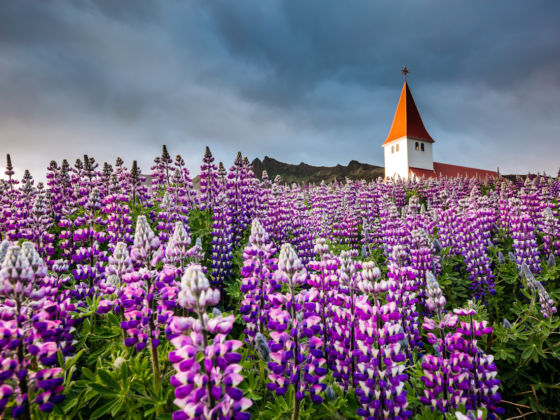From one angle they look purple, from another they appear to be more blue. For many Icelanders, the debate over the invasive blue Nootka lupine flower goes much deeper than what its true color is. The lupine is an invasive species that has spread far beyond the intent of its original purpose. The flower is native to North America and was originally introduced to the island in the late 1970s in an effort to control increased soil erosion, according to a report in The New York Times. But the soil-stabilizing plant reproduced extremely fast and has since spread uncontrollably across the eastern part of the island. While the blue Nootka lupines’ mid-summer bloom adds speckles of vibrant color to Iceland’s verdant green valleys, it’s also viewed as a pest.


Icelanders Are Fighting Over Whether to Cut or Keep These Gorgeous Blue Flowers
The lupine’s excessive spreading has been fueled in part by climate change. As the atmosphere has continued to warm, the flower is able to survive later into the year than when it was originally introduced. It has also spread to parts of Iceland that were previously too dry or too cold for the lupine to thrive. The Times reported that within three decades, the flower could cover vast swaths of Iceland’s highland interior, threatening local plant life, including the delicate species of moss that covers the lava fields.
Inside Reykjavik’s city limits, the flower is now common in parks and other grassy areas. As fall approaches, the lupine sheds its purplish blue coat in favor of a depressing shade of brown, another source of disdain among locals. Many have taken to combatting the lupine with garden tools and knives, while others continue to point to its success in battling soil erosion.
If you plan to visit the island any time soon, there’s no need to shy away from the photogenic flower — but you might not want to go bragging about your shot to the person sitting next to you at the café.
H/T: The New York Times